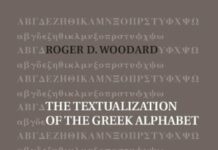
Ebook Info
- Published: 2008
- Number of pages: 272 pages
- Format: PDF
- File Size: 9.76 MB
- Authors: Roger D. Woodard
Description
This book, derived from the acclaimed Cambridge Encyclopedia of the World’s Ancient Languages, describes the ancient languages of Mesopotamia, Egypt and Aksum, for the convenience of students and specialists working in that area. Each chapter of the work focuses on an individual language or, in some instances, a set of closely related varieties of a language. Providing a full descriptive presentation, each of these chapters examines the writing system(s), phonology, morphology, syntax and lexicon of that language, and places the language within its proper linguistic and historical context. The volume brings together an international array of scholars, each a leading specialist in ancient language study. While designed primarily for scholars and students of linguistics, this work will prove invaluable to all whose studies take them into the realm of ancient language.
User’s Reviews
Editorial Reviews: Book Description A convenient, portable paperback derived from the acclaimed Cambridge Encyclopedia of the World’s Ancient Languages. About the Author Roger D. Woodard is the Andrew Van Vranken Raymond Professor of the Classics at the University of Buffalo. His numerous publications include The Cambridge Encyclopedia of the World’s Ancient Languages (2004).
Reviews from Amazon users which were colected at the time this book was published on the website:
⭐This is part four of the Cambridge Encyclopedia of the World’s Ancient Languages, a collection of 45 papers covering in principle all languages of which sufficient recorded material is available from before 476 AD. All entries are of superb quality, and describe all aspects of the language in some depth, often even diachronically. So I’ll restrict myself to specific comments on the entries in this volume.The Sumerian entry alone is worth the money, since almost all serious books on Sumerian are unaffordable. Sumerian is structurally completely different from the surrounding languages, and looks like a North-Caucasian language. This similarity is not noted in the text, since structural similarity is a poor argument in linguistics. Its verb system is split-ergative. The description of cuneiform is deferred to the entry on Akkadian.Elamite was described in contemporary texts of the surrounding countries as weird and twisted. The phonetic inventory that has been recovered is very normal and tame, so we are probably missing something. The purported relationship to the Dravidian languages is reported but neither endorsed nor rejected.The Akkadian entry starts with a good explanation of cuneiform and its developments. A full list of signs is given in an appendix; unfortunately the Borger numbers of the signs are not given. The infamous homonymy of the signs (there are 27 ways to write “ge”!) is explained away by the fact that a any given moment in time only perhaps two or three of these signs were in use, and their use was fixed by tradition. Since Akkadian is an East-Semitic language, it differs considerably from Arabic, Hebrew, etc., but the main morphology is easily recognizable as Semitic.The Egyptian language (Afro-Asiatic but not Semitic) covers 4400 years (~3000 BC – ~1400 AD, from Early Egyptian to Coptic), and it is not surprising that the text feels cramped for space; even Loprieno’s book ‘Ancient Egyptian – A Linguistic Introduction’, which is ten times bigger, makes dense reading. An enormous lot of information is supplied, but sometimes in highly technical prose (like what is a ‘prospective’? Ah, I see, it is a stem used in future forms, etc.; what is a ‘rheme’? I still haven’t found out). Hieroglyphs are explained very well, and demystified in a few paragraphs. Quite some attention is paid to Coptic. A 25 page appendix with a structured list of about 750 hieroglyphs closes the entry.Ge’ez (Classic Ethiopian) is the language of Aksum in Ethiopia; it is much neglected in linguistics, but here you can find lots of information. The interesting/weird Ethiopian syllabary with its corresponding phonetics is explained in detail. The language is South-Semitic and may not differ more from Hebrew than German from English, in spite of there being more than 1500 kilometer between the two. This allows intersting comparisons between Akkadian (above) and Ge’ez, some of which are worked out in the text.These five books are going to get prime estate in my book case!
⭐Excellent product. It provides an excellent grammatical and syntactical summary of the languages it deals. Shame it doesn’t have more languages.
⭐La Historia del Registro de la Información, una parte muy importante de nuestra propia Historia, soluciones, problemas que trajeron las soluciones, mejoras, se puede conocer simplemente leyendo este libro.
⭐
⭐I have been expecting that book for months!
Keywords
Free Download The Ancient Languages of Mesopotamia, Egypt and Aksum in PDF format
The Ancient Languages of Mesopotamia, Egypt and Aksum PDF Free Download
Download The Ancient Languages of Mesopotamia, Egypt and Aksum 2008 PDF Free
The Ancient Languages of Mesopotamia, Egypt and Aksum 2008 PDF Free Download
Download The Ancient Languages of Mesopotamia, Egypt and Aksum PDF
Free Download Ebook The Ancient Languages of Mesopotamia, Egypt and Aksum





